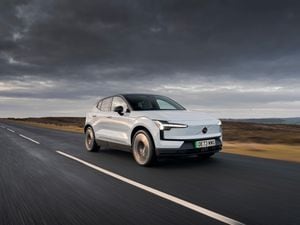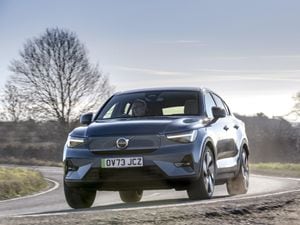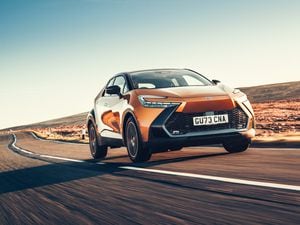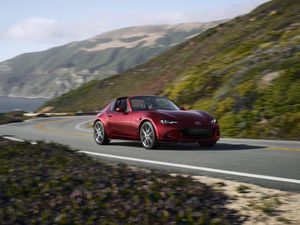First Drive: The 2021 Jaguar XF stakes a claim for best in class
Jaguar’s new large premium car is fighting to take on the best in its segment. Darren Cassey finds out how it has closed the gap.
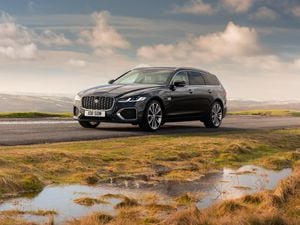
What is it?
The Jaguar XF has a tough job on its hands. The executive saloon/estate market is dominated by the big three German brands, with the Mercedes-Benz E-Class, BMW 5-Series and Audi A6 being lovely inside, well-built and great to drive.
Considering Jaguar is a much smaller company than those rivals, it has arguably always punched above its weight, but has long traded on the ‘buy British’ or ‘I don’t want the obvious choice’ mentality. That’s all about to change with the 2021 XF.
What’s new?
As before, the XF is available as a saloon and Sportbrake estate, but after that, the updates are fairly comprehensive. There have been subtle changes on the outside but comprehensive changes on the inside, which includes updating to JLR’s latest infotainment system, as well as adding new engines including a mild-hybrid diesel (MHEV).
The XF also gets active road noise cancellation to improve refinement and cabin air ionisation ‘to improve occupant health and wellbeing’.
Perhaps just as importantly, Jaguar has worked to simplify its range by reducing the number of options and derivatives for each model, made sure the online price is the same one you’d get by going into the dealer, and reduced the starting price by £2,410. On paper at least, that makes it an even better deal compared with the Germans.
What’s under the bonnet?
There are three engine choices, with two petrol options (247bhp and 296bhp) and a mild hybrid diesel (201bhp). We’ve tested the more powerful petrol, badged P300, and the diesel, badged D200.
We’ll start with the P300 because that’s meant to be the most popular. On paper, it’s relatively quick, with a sub-six-second 0-60mph time, but in reality, it feels like it’s struggling to pull what is a pretty big, heavy car. It’s a smooth engine, but doesn’t feel too well-suited to the XF – and with fuel economy of around 33mpg, it’s not hugely economical either.
The diesel, on the other hand, feels much better-equipped for this application. Being an MHEV means it has that initial electric punch under acceleration, which coupled with the higher torque of the diesel motor means the XF feels more responsive in D200 form. Official economy figures are about 54mpg, too, so not only is it less expensive to buy, it’ll cost less to run.
It’s a shame, then, that the demonisation of diesel means most buyers will shy away, because from behind the wheel this feels like the superior option.
What’s it like to drive?
The remit of the large executive class is to waft around in comfort, and the XF does a fantastic job here. The active road noise cancellation plays a key role because it isolates the cabin from the exterior, making it a relaxing place to devour miles in.
Driving the XF is effortless, requiring minimal effort without the controls feeling so light that smooth progress is difficult. Meanwhile, the all-wheel-drive system proved reassuring during our test in snowy conditions.
How does it look?
One aspect of the XF that has never been in doubt is that it’s a fantastic-looking thing, which is likely why Jaguar felt little need to mess with the formula. There’s a new front end with a redesigned grille, lower air intakes, and LED headlights with a cool ‘double-J’ light signature.
The rear bumper has been given a minor change too, but the overall impression remains one of understated classiness. There’s no denying the XF is a premium product even if you haven’t had a chance to look inside.
What’s it like inside?
Although the exterior changes are subtle, it’s the interior where most of the effort has gone – and the results are excellent. Previously, Jaguar’s interiors looked the part but were just missing that special something that would elevate them to best-in-class, but first impressions are that the XF has been lifted to really rival the Audis of this world.
The dashboard is leather-clad and has a simple, minimalist ethos that’s perfect for this segment. The new Pivi Pro infotainment system, which we’ve seen and praised in other Jaguar Land Rover products, is similarly well-integrated here. The tablet-like screen looks great with the thin bezels and fantastic menu design, while the smattering of physical buttons and knobs below shows JLR pleasingly resisted the urge to bury everything within touchscreen menus.
Perhaps the only complaints that could be levelled at the car from our test drive are the facts that the driver’s footwell felt surprisingly cramped for such a large car (though we tested a left-hand-drive model so it’s unclear if these issues would carry over to UK cars), while the R-Dynamic seats were quite hard and could become uncomfortable on longer drives.
What’s the spec like?
As we previously mentioned, Jaguar has worked to simplify its range, so there are now 28 derivatives instead of 64, which makes choosing the right car less convoluted.
Jaguar does do trims slightly differently to most other car makers though, so you choose between the regular model or sporty R-Dynamic first, then choose your specification level after that. Typically, the sporty model will simply be a standalone trim level.
Standard equipment on the regular car – which starts at £32,585 – includes LED headlights, rain-sensing windscreen wipers, lots of heated parts, 11.4-inch infotainment screen with the latest Pivi Pro system and much more. R-Dynamic versions get a sporty body kit, different 18-inch alloy wheels and sports suspension, with prices starting at £33,970.
The regular saloon is only offered in S specification and the regular Sportbrake only gets the SE trim, while R-Dynamic models are available with S, SE and HSE trim levels. It feels more convoluted to explain than it is in practise…
Verdict
To be honest, the XF feels like a much bigger jump than we were expecting going into this test drive. It remains a handsome thing, but the interior upgrades have elevated it to be a much closer rival to the best in the class – and with the reduced price it becomes an even more compelling option.
It’s a shame that the diesel is arguably the best to drive but will likely account for the fewest sales, so if you’re not totally set on the petrol it’s worth giving it a go. Overall, the cabin is a step-change from its predecessor and coupled with the refined driving experience, the XF has become a fantastic choice in this segment.

